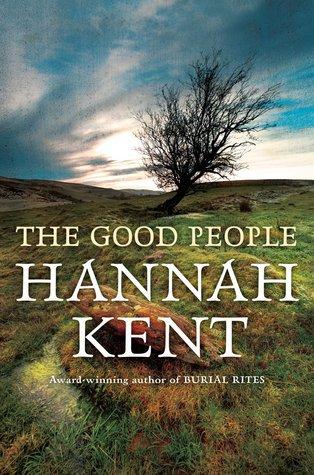 This is Hannah Kent’s second book, after her superb Burial Rites, which was about an 1829 true crime in Iceland. Like Burial Rites, this one is based on a true story occurring in Ireland in the late 1800s. And in the broader sense, it’s very much about the culture and folklore of rural Ireland at this time.
This is Hannah Kent’s second book, after her superb Burial Rites, which was about an 1829 true crime in Iceland. Like Burial Rites, this one is based on a true story occurring in Ireland in the late 1800s. And in the broader sense, it’s very much about the culture and folklore of rural Ireland at this time.
This book reminded me of two excellent books I read this year: The Bear and The Nightingale and The Wonder, although I’ll admit I enjoyed it slightly less than those two books. Like those books, The Good People straddles the line between belief and disbelief in the fairy world, and the intersection of those beliefs with Catholicism.
The book begins with the widow Nora, whose husband has just fallen dead while working in the fields. Nora recently lost her only daughter as well, and she takes care of her grandson Michael, who suffers from a disabling affliction, one that has no medical diagnosis. He was a healthy boy and now he can’t walk or speak. The superstitious villagers fear Nora’s run of bad luck and they call Michael a “changeling” – an evil spirit that’s left behind when a child is taken by the fairies.
This is also the story of Nance, an elderly healer who has “the Knowledge” of the fairies. She uses her cures to treat physical ailments as well as fairy curses. For the villagers, she’s the only kind of doctor they have. Some believe, some aren’t so sure, but most of them can point to a time when Nance has helped them. Until a new priest moves in who sees the villagers’ beliefs as a threat to the teachings of Catholicism.
Kent, who is Australian, makes the reader feel thoroughly immersed in the life of this rural Irish town. But it’s not a positive view; her villagers are Hardy-esque in their vicious gossip and their need to turn on each other in times of difficulty. Although in the beginning we see Nora surrounded by well-wishers, the town is largely driven by ritual and superstition rather than kind feelings towards their fellow men and women, as evidenced by the woman who is being savagely beaten by her husband yet no one takes any action. When Nora becomes overwhelmed by grief, rather than turn to her neighbors she feels more alone than ever.
Kent is a vivid storyteller and this is a moving story. I found myself constantly wanting to believe that the fairy lore was true. And, as in The Bear and The Nightingale, I found Christianity’s “war” on pagan beliefs absolutely tragic. I also love stories about small town dynamics.
However, The Good People suffers somewhat from the dreariness of its tone and the constant suffering of its characters. I was also frustrated by the characters in this novel. It was clear where this story was going yet they seemed powerless to make any changes. In the first half, Kent really explores the thoughts and motivations of Nora, but as the book goes on the perspective shifts to Mary, Nora’s servant. Mary is sympathetic, but her passivity is frustrating (though I recognize how few options she has, being completely dependent on Nora).
Note: I received a complimentary advance copy of this novel from NetGalley and publisher Little, Brown & Co. in exchange for an honest review. The book was published September 19, 2017.

